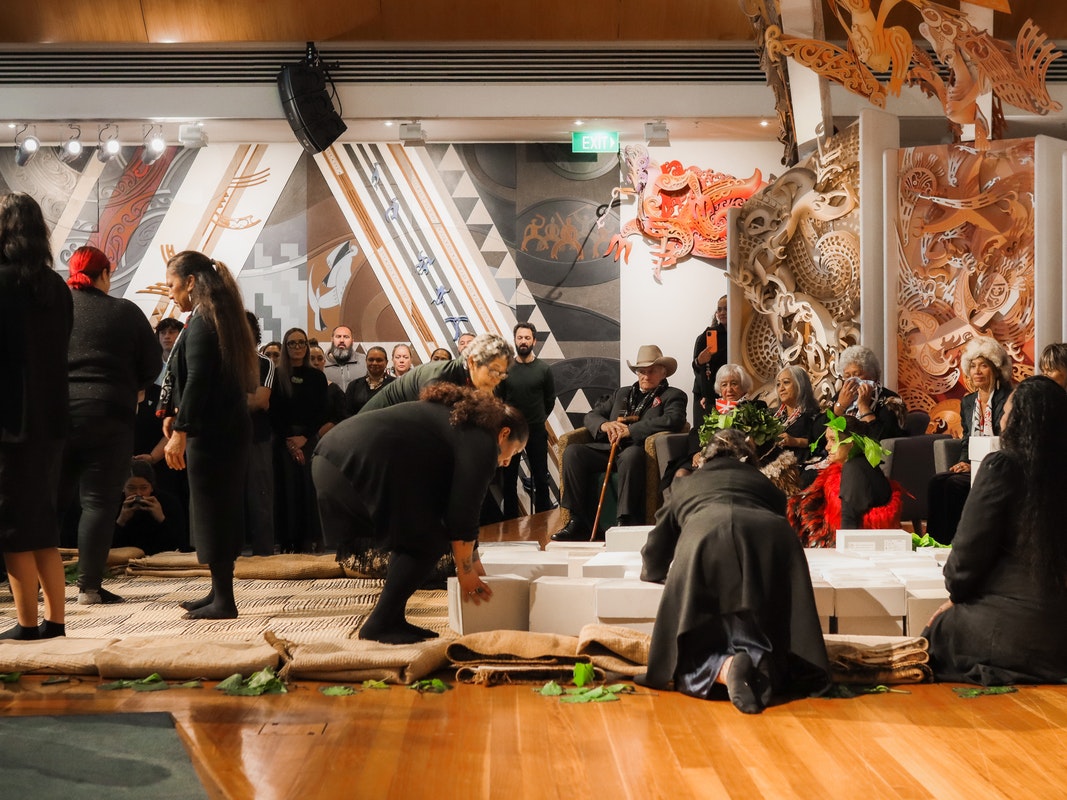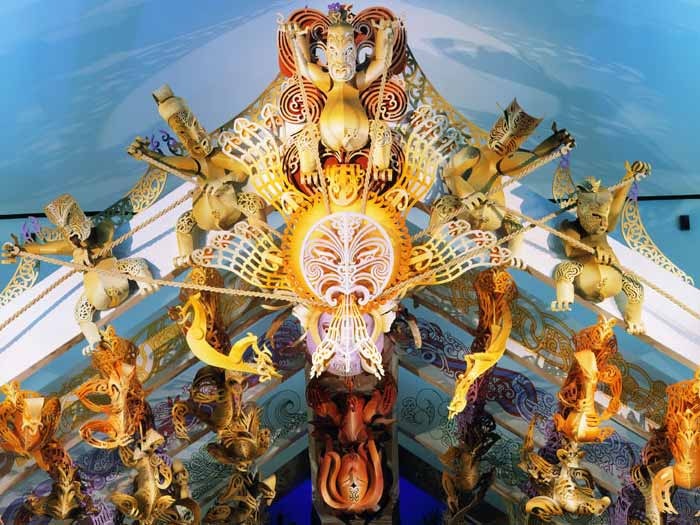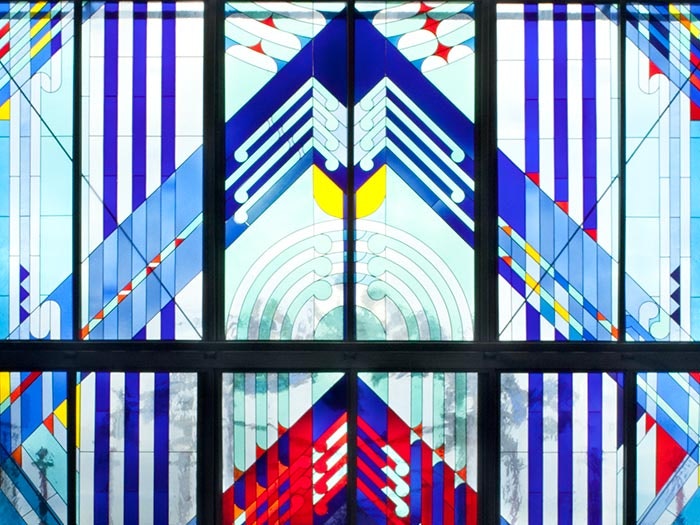
Seeking the domestic return of kōiwi tangata and kōimi tchakat from Te Papa
Find information on the process of returning kōiwi tangata, kōimi tchakat and Toi moko to their whānau, hapū, iwi/imi or rohe/takiwā.
Free museum entry for New Zealanders and people living in New Zealand
Open every day 10am-6pm
(except Christmas Day)
Free museum entry for New Zealanders and people living in New Zealand
The Toi moko, kōiwi tangata, and kōimi tangata/kōimi tchakat arrive at Te Papa where a pōwhiri will be conducted by Te Papa and the local Māori community. This ceremony acknowledges their homecoming, and greets the ancestors with tears of affection and warmth.
Placing kakahu over the Māori and Moriori skeletal remains, 2016. Photograph by Kate Whitley. Te Papa
They will then go through a period of quarantine and conservation assessment. Te Papa does not have ownership of Toi moko, kōimi tangata/kōimi tchakat, and kōiwi tangata, but we do have a guardianship role and will care for and house the Māori ancestral remains until the time they return to their kith and kin in New Zealand.
Once back in Aotearoa New Zealand further research will be undertaken to verify and confirm provenance.
It’s important that we return all Toi moko, kōimi tangata/kōimi tchakat, and kōiwi tangata to their whānau of origin which is different from the collectors who traded the ancestral remains.
The trade in Toi moko, kōimi tangata/kōimi tchakat and kōiwi tangata began from 1770 and lasted up until the 1970s.
The repatriation team’s research involves a lot of detective work. Since the programme was established in 2003, its research has focussed on four key streams including:
verifying accession information held by individual museums about the Toi moko and kōiwi tangata they house
verifying historical information that is contained in Māori oral histories and early accounts by European and American explorers, collectors and traders from the time of 1769
researching inter-tribal battles that may have led to the trade of their enemies' heads; and
working with experts in tāmoko to possibly identify provenance through moko designs and patterns on the Toi moko.
We do not conduct DNA or isotopic testing on Māori ancestral remains – however, this may be considered as a possible avenue to follow in the future.
Māori and Moriori welcome the gracious gesture of international museums and institutions to agree to repatriate their ancestral remains.
For Māori and Moriori communities the connection between the past and present is at the forefront of their collective memory. Returning the remains of these ancestors allows Māori and Moriori living today to reconcile and honour the past.
The repatriation of Toi moko, allows for the reconnection of mana and tapu to these tūpuna through karakia, pōwhiri, and care in Te Papa’s wāhi tapu where their wairua may rest.
Since 2003 Te Papa has returned 76 Māori ancestral remains to about 20 hapū and iwi around the country and presently has in place agreements to repatriate tūpuna to iwi in Te Tai Tokerau and Kāwhia. More tūpuna will be returning to hapū and iwi in 2024 and in 2025.
Regarding the return of Moriori ancestral remains to Rēkohu (Chatham Islands), Te Papa is working in partnership with the Hokotehi Moriori Trust to ensure the safe return of 500 kōimi tangata/kōimi tchakat that have been repatriated from international institutions as well as uplifted from domestic museums and universities throughout Aotearoa New Zealand including from the Whanganui Regional Museum, Canterbury Museum, Otago University, Auckland University, and the Tūhura Otago Museum. Tentative conversations with the Hokotehi Moriori Trust indicate their karāpuna may start returning to their homeland from 2026.
Repatriation Coordinator Te Arikirangi Mamaku at the Smithsonian in Washington DC, 2016. Photograph by James Di Loreto, Smithsonian.
Some of these tūpuna repatriated to locations in New Zealand are cranium or skulls, which in the past may have been Toi moko.
As more ancestors return to Te Papa, more will return to their places origin around Aotearoa New Zealand.

Find information on the process of returning kōiwi tangata, kōimi tchakat and Toi moko to their whānau, hapū, iwi/imi or rohe/takiwā.

Thu 18 May 2017
Forty-four Moriori and Māori ancestral remains are returning to Aotearoa New Zealand with the support of the City of Bremen.
News He pānui

Mon 15 May 2017
Māori ancestral remains held by Karolinska Institutet in Sweden are returning to Aotearoa New Zealand with the support of the Swedish Government.
Press release He pānui pāpāho